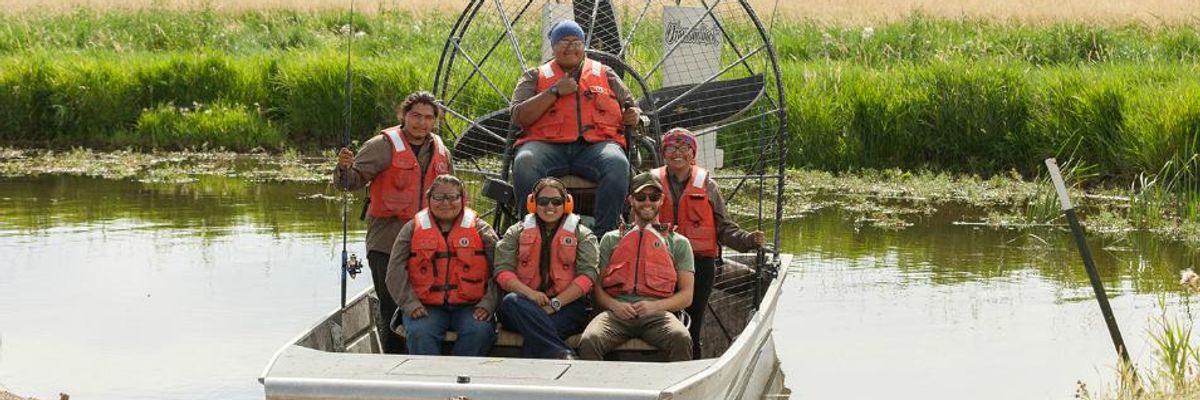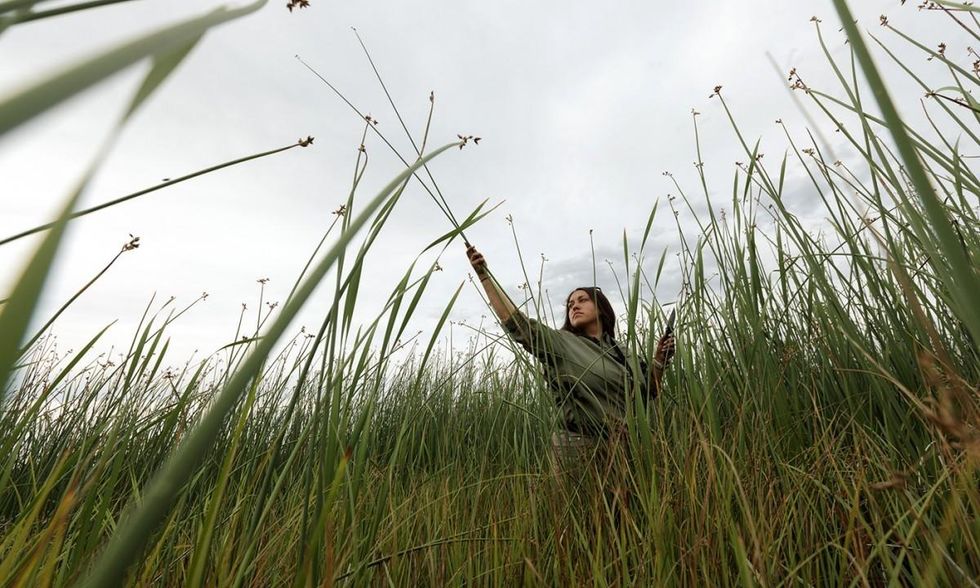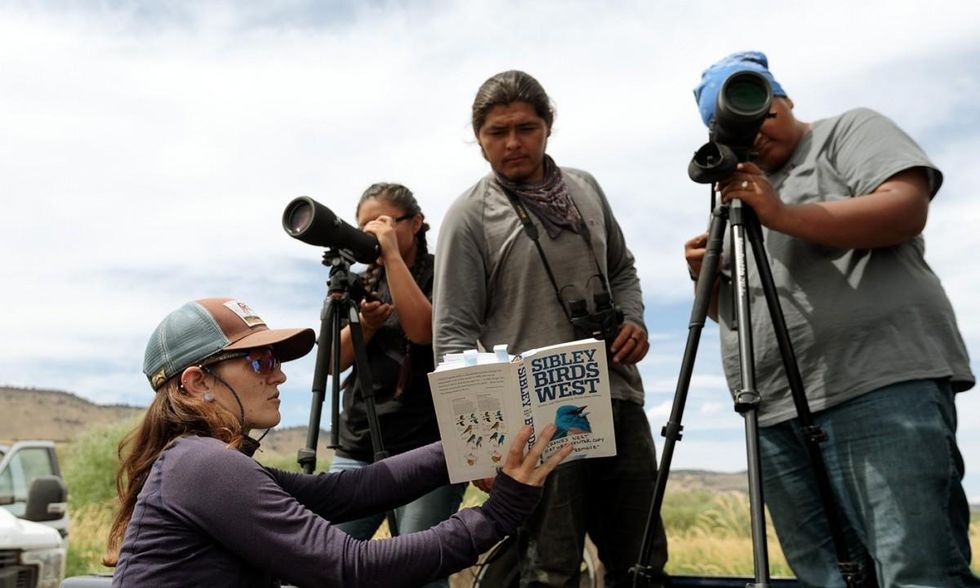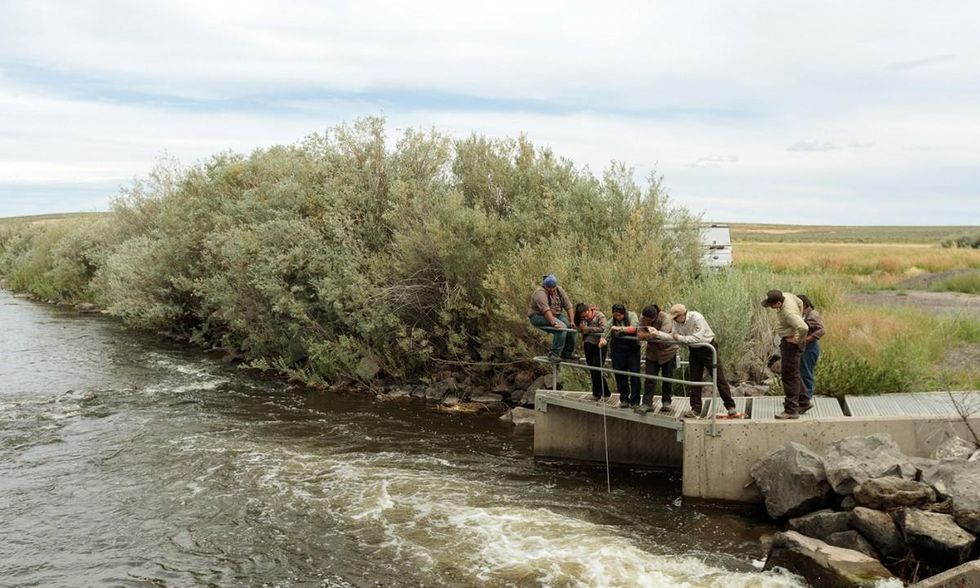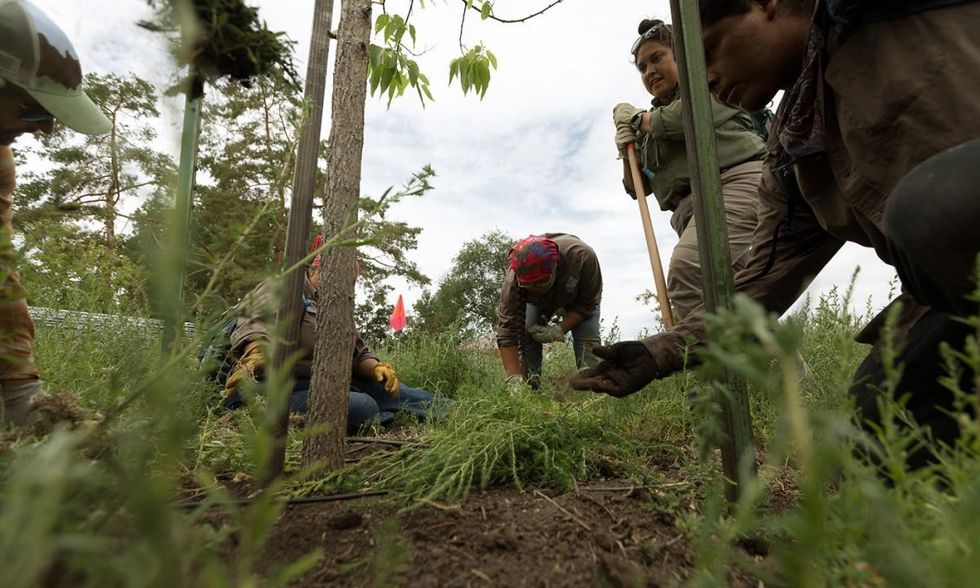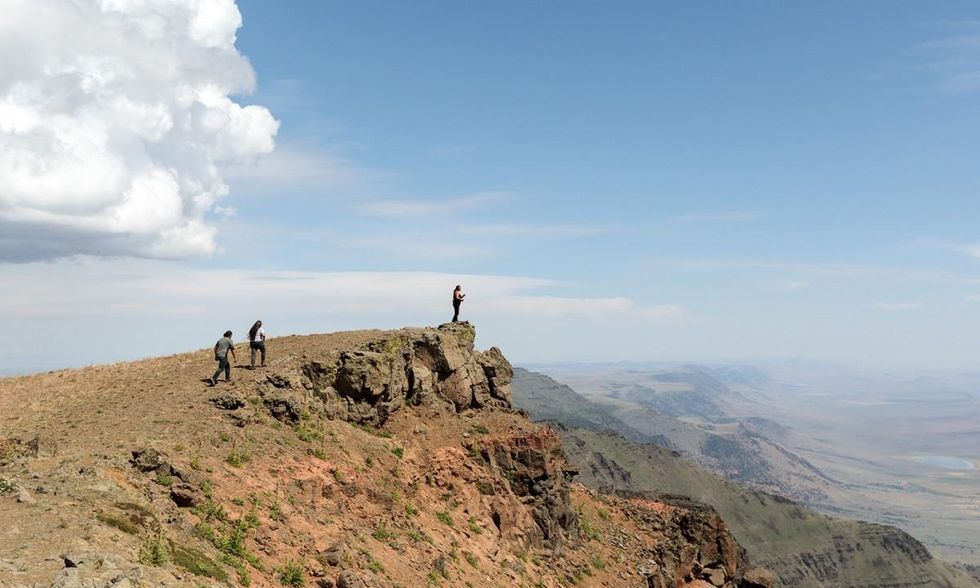It had been more than a 100 years since the Nimiipuu (Nez Perce) people launched a carved canoe in eastern Oregon's Wallowa Lake. And now in this place, beloved by Chief Joseph and his people, crews from several tribal canoes had gathered and joined in song--songs sung in their language and not heard on that water in generations.
Tiyana Casey recalls the power of the occasion: "So this is how we foster a relationship with our ancestors," she says. "We bring those songs back that were given to us by them that we still sing today."
Crew leader for the Tribal Stewards Program, Casey sees a familiar spark among four young Native crew members she led this past summer in a nine-week innovative program co-organized by Oregon Natural Desert Association and the Northwest Youth Corps.
The Tribal Stewards Program is an immersive, hands-on field experience organized around cultural and ancestral knowledge of Northwest tribal communities. It introduces crew members to land conservation and restoration using a traditional camping model first developed by Northwest Youth Corp in 1984.
Over nine weeks, Tiyana and her team worked on environmental restoration field projects across Oregon--from the Hart Mountain National Antelope Refuge to the Pine Creek Conservation Area, owned by the Confederated Tribes of Warm Springs, and Denny Jones Ranch, which is owned by the Burns Paiute tribe.
At Malheur National Wildlife Refuge, they took water samples, conducted waterfowl surveys, and learned about the impact of invasive carp. They built fences and participated in juniper eradication at Malheur National Forest.
Casey, who has a degree in geology, credits ONDA for developing a curriculum that acknowledges and recognizes tribal traditions; she's eager to build on that foundation using what she and her team learned in the field.
"There's no land restoration for Indigenous people without that cultural aspect," she explains. "And fostering our relationship with the land is really important--having that reciprocity. Like you can't just take take take take take from a system, you have to give back, and that's ingrained in our values."
So often, decisions are made without any thought to how it will affect Indigenous communities, Casey said. Her goal with the young people in the stewards program is to help them articulate what actions they want from federal agencies, community partners--anybody working with the land. She also hopes the program will inspire them to consider a career in conservation.
Monique "Mo" Moody (Warm Springs), a student at Haskell Indian Nations University and a member of the crew, recognizes the importance of that. "As a Native to the area, I think it's important to have these homelands treated by Native people," she says. "The program made me realize the lack of Indigenous people in the forest service field. I would like to change that and, hopefully, inspire others."
The crew visited one place during the span of their nine weeks where they were unable to stay to finish their work. Marked by petroglyphs, the location was sacred and should not have been entered in the first place without a lot of preparation, Casey says. They had been there for two days and had dug their latrine before she and her team realized that. It is something that non-Native planners lacked the cultural knowledge to foresee.
"It was a very powerful place," she explains. "Very intense, and that kind of area should be handled with care."
Casey said being close to the land compels you to consider how it was taken. Most treaties signed with the United States contain language to protect a tribe's right to harvest and fish and hunt in their homelands. "There's a lot of bloodshed behind those words," she says. Yet, it's evident from the way colonizers treat the land and the foods, like roots, berries, salmon that are sacred to her people, that it is not valued in a sacred way.
This disconnect means federal and state agencies aren't making land-use decisions in ways tribes would like or that the treaties dictate. "It's really heartbreaking," Casey says. "I want to show these youth your voice is so powerful. How would you change those programs?"
Dakota Pablo (Pima), who is also a student at Haskell and a member of the crew, says he hopes to rejoin the program next year, despite the challenges of camping in remote areas for weeks.
"The program has opened up doors of possible career opportunities that I hadn't previously considered," he says. "I also plan to get a degree in Environmental Science, and the program helped me realize there aren't many Pima tribal members who are in the Forest Service, and it makes me want to help preserve my own tribal land."

